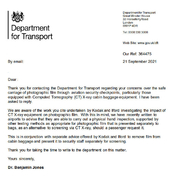I have an upcoming trip with a high probability that my film will get x-rayed. So wondering if anyone knows specific film stocks that hold up well to x-ray.
The trip is Tokyo -> Peking (transit) -> CDG Paris -> Eurostar train to London -> Gatwick to Peking (transit) -> Tokyo. Traveling for the holidays with a tight schedule each day of the trip, may not be able to find an open post office to mail my film back to me.
Here's what I know so far:
The trip is Tokyo -> Peking (transit) -> CDG Paris -> Eurostar train to London -> Gatwick to Peking (transit) -> Tokyo. Traveling for the holidays with a tight schedule each day of the trip, may not be able to find an open post office to mail my film back to me.
Here's what I know so far:
- CT scanners are stronger than traditional x-ray machines
- China, France, and UK are known to deny hand-checks but Japan always allows it
- Low ISO holds up better
- Carry-on x-ray machine strength varies case-by-case, but typically weaker than check-in luggage scanners
- Lina Bessonova put up a blog post and video showing monochrome holding up better than color films, but only experimented with a few monochrome stocks, only one of which was 100 ISO or lower
- A lot of people online say they've x-rayed multiple times and seen no degradation, yet some people say one x-ray destroyed their photos














